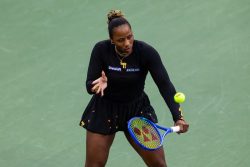
People walk on a busy retail street in Dublin in October 2021.
12:21 JST, January 17, 2024
DNA obtained from the bones and teeth of ancient Europeans who lived up to 34,000 years ago is providing insight into the origin of the often-disabling neurological disease multiple sclerosis, finding that genetic variants that now increase its risk once served to protect people from animal-borne diseases.
The findings stemmed from research involving ancient DNA sequenced from 1,664 people from various sites across Western Europe and Asia. These ancient genomes were then compared with modern DNA from the U.K. Biobank, comprising about 410,000 self-identified “white-British” people, and more than 24,000 others born outside the United Kingdom, to discern changes over time.
One striking discovery related to MS, a chronic disease of the brain and spinal cord that is considered an autoimmune disorder in which the body mistakenly attacks itself.
The researchers identified a pivotal migration event about 5,000 years ago at the start of the Bronze Age when livestock herders called the Yamnaya people moved into Western Europe from an area that includes modern Ukraine and southern Russia.
They carried genetic traits that at the time were beneficial, protective against infections that could arise from their sheep and cattle. As sanitary conditions improved over the millennia, these same variants increased MS risk. This helps explain, the researchers said, why Northern Europeans have the world’s highest MS prevalence, double that of Southern Europeans.
“We are a product of the evolution that happened in past environments, and in many ways we are not optimally adapted to the environment we have created for ourselves today,” said University of California, Berkeley population geneticist Rasmus Nielsen, one of the leaders of the research published on Jan. 10 in the journal Nature.
Around 11,000 years ago, farmers from the area of modern Turkey expanded into Western Europe, replacing hunter-gatherers. It was these agriculturalists who the Yamnaya later replaced.
“The Yamnaya were Europe’s first true nomads. They used domesticated cattle and horses to access the interiors of the Asian Steppe, where there is little to eat or drink, so carried everything with them on wagons. Physically they were unusually large, which we can see by measuring the skeletons and also genetically, and apparently fairly violent,” University of Cambridge geneticist and study coauthor William Barrie said.
“We think that much of the replacement that happened involved warfare,” Nielsen added.
High Yamnaya-related ancestry exists in Northern Europeans, peaking in Ireland, Iceland, Norway and Sweden and decreasing further south.
The findings underscore how genetic traits can change from beneficial to deleterious as conditions evolve.
“Pathogenic infections increased in frequency during the Bronze Age, due to close proximity between people and their domestic animals, as well as rising population density,” University of Copenhagen computational evolutionary biology specialist and research coauthor Evan Irving-Pease said.
“It was not until the modern era, with widespread sanitation and medical care, that these genetic variants became surplus to our immunological requirements, resulting in an increase in the risk of developing MS and other autoimmune diseases,” Irving-Pease added.
The findings may carry implications for MS research and treatment.
“This changes our view of MS, helping us understand its origins. We can see MS as the result of an immune system which has efficiently evolved to cope with a range of infections in the human past but which now exists in a very different environment. This difference between the past and modern sanitary environments likely causes the overactive immune system. This implies we should be aiming to recalibrate the immune system rather than suppress it,” Barrie said.
The research shed light on other characteristics of Europeans.
Because the Yamnaya were genetically predisposed to being tall, present-day Northern Europeans tend to be taller than Southern Europeans, who have greater ancestry from Neolithic farmers who were genetically predisposed to being short.
Eastern Europeans have a heightened genetic risk for Alzheimer’s and type 2 diabetes, the researchers found. They also discovered that lactose tolerance, the ability to digest the sugar in milk and other dairy products, emerged in Europe approximately 6,000 years ago.
"Science & Nature" POPULAR ARTICLE
-

Japan in Prime Spot for Total Lunar Eclipse Early Monday Morning, 1st Visible from Country in Almost 3 Years
-

Extinct Mammal Fossil Excavated in Akan, Hokkaido, Reidentified; Species Previously Only Found in North America
-

Japan Cultivating Space Food Experts, Aiming to Prevent Loss of Muscle Mass, Bone Density Through Food
-

Biomechanics Study Shows How T. rex, Other Dinosaurs Fed on Prey
-

Chile Takes New Steps to Save Endangered Frog
JN ACCESS RANKING
-

Japan’s Seafood Exports Still Hurting in Wake of Fukushima Incident, but Hopes Rising for Chinese Market
-

Japan’s Core Inflation Slows in July, Stays above BOJ Target
-

Japan in Prime Spot for Total Lunar Eclipse Early Monday Morning, 1st Visible from Country in Almost 3 Years
-

Japan, India Aim for More Than 500,000 People-to People Exchanges over Next 5 Years
-

S. Korea’s Lee Eager to Enhance Ties with Japan More





















